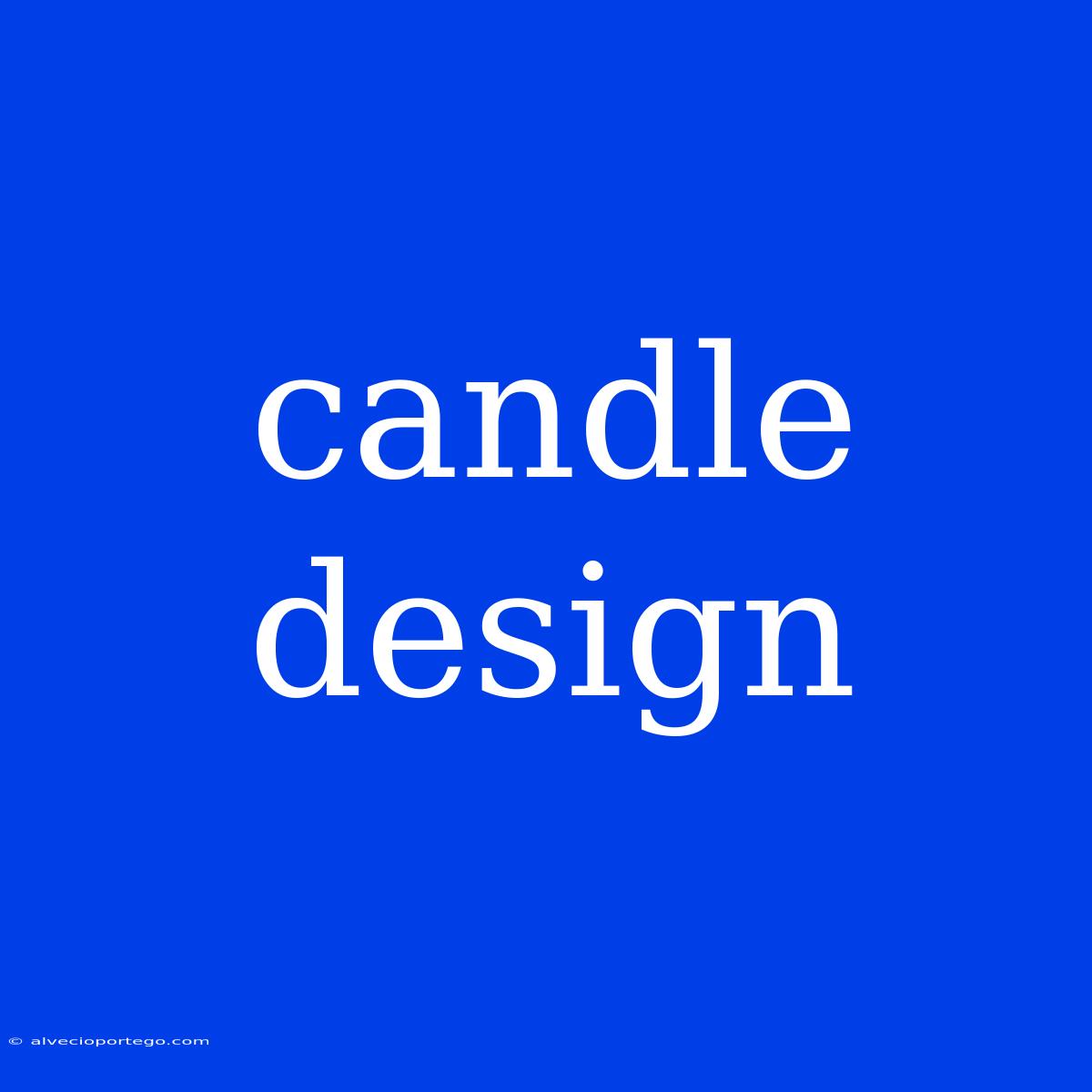The Art of Candle Design: From Inspiration to Creation
Candles, beyond their practical function of providing light, have become a significant part of interior decor and personal expression. Candle design encompasses a wide array of elements, from the choice of wax and fragrance to the overall aesthetic and presentation.
The Foundation: Choosing the Right Wax
The type of wax used determines the candle's burn characteristics, scent throw, and overall appearance. Here are some popular choices:
- Soy Wax: Known for its clean burning, natural origin, and ability to hold fragrance well.
- Beeswax: Provides a warm, honey-like scent and a natural, rustic look.
- Paraffin Wax: The most common and affordable option, but may produce soot and have a less pleasant scent.
- Palm Wax: A renewable and sustainable option, offering a good balance of scent throw and clean burning.
Fragrant Delights: Choosing the Perfect Scent
Fragrance plays a vital role in creating the desired ambiance. Consider the following factors:
- Scent Family: Floral, fruity, woody, citrus, spicy, or gourmand scents.
- Scent Strength: Light, medium, or strong.
- Scent Blend: Combining different notes to create a unique and complex aroma.
Aesthetics: Form, Color, and Container
Form: Beyond the traditional cylinder, candles can be designed in various shapes:
- Pillars: Tall and cylindrical, ideal for statement pieces.
- Votives: Small and often round, perfect for creating ambiance.
- Tins: Practical and portable, offering a unique visual appeal.
- Geometric Shapes: Add a modern touch to your décor.
Color: Dyeing wax offers endless possibilities:
- Natural: Using natural pigments for a subtle and earthy look.
- Vibrant: Using synthetic dyes for bold and eye-catching colors.
- Ombre: Gradual transitions of colors create a unique and visually appealing effect.
Container: The container plays a significant role in the candle's aesthetic:
- Glass Jars: Popular for their versatility and elegant appearance.
- Metal Tins: Durable, practical, and offer a vintage appeal.
- Ceramic Pots: Add a touch of rustic charm.
- Unusual Containers: Think repurposed teacups, mason jars, or antique bottles.
Crafting a Unique Design: Techniques and Trends
- Embellishments: Adding decorative elements such as crystals, dried flowers, or metallic flakes.
- Textured Surfaces: Creating interesting textures using different molds or techniques like marbling.
- Layered Designs: Combining different wax colors, fragrances, or even incorporating multiple wicks.
- Minimalist Design: Focus on simple shapes and clean lines, emphasizing the natural beauty of the wax.
- Sustainable Design: Utilizing eco-friendly materials and practices in the candle creation process.
Beyond the Design: Important Considerations
- Wick Size: Matching the wick size to the candle's diameter is crucial for a safe and efficient burn.
- Wick Placement: Ensuring the wick is centered prevents uneven burning and promotes a clean flame.
- Safety Precautions: Always follow safety guidelines when burning candles.
Candle design is an art that blends creativity, technical skill, and an appreciation for aesthetics. By exploring different materials, techniques, and styles, you can create unique and captivating candles that illuminate your space and enhance your personal style.

